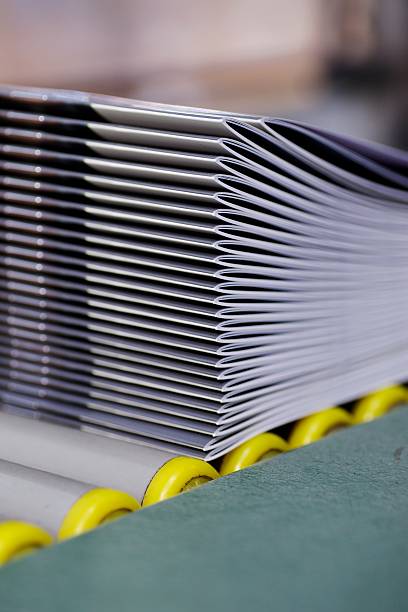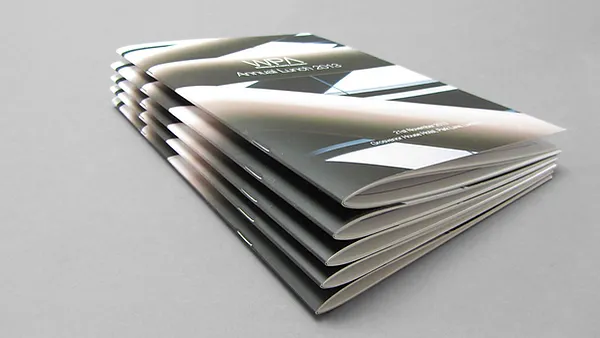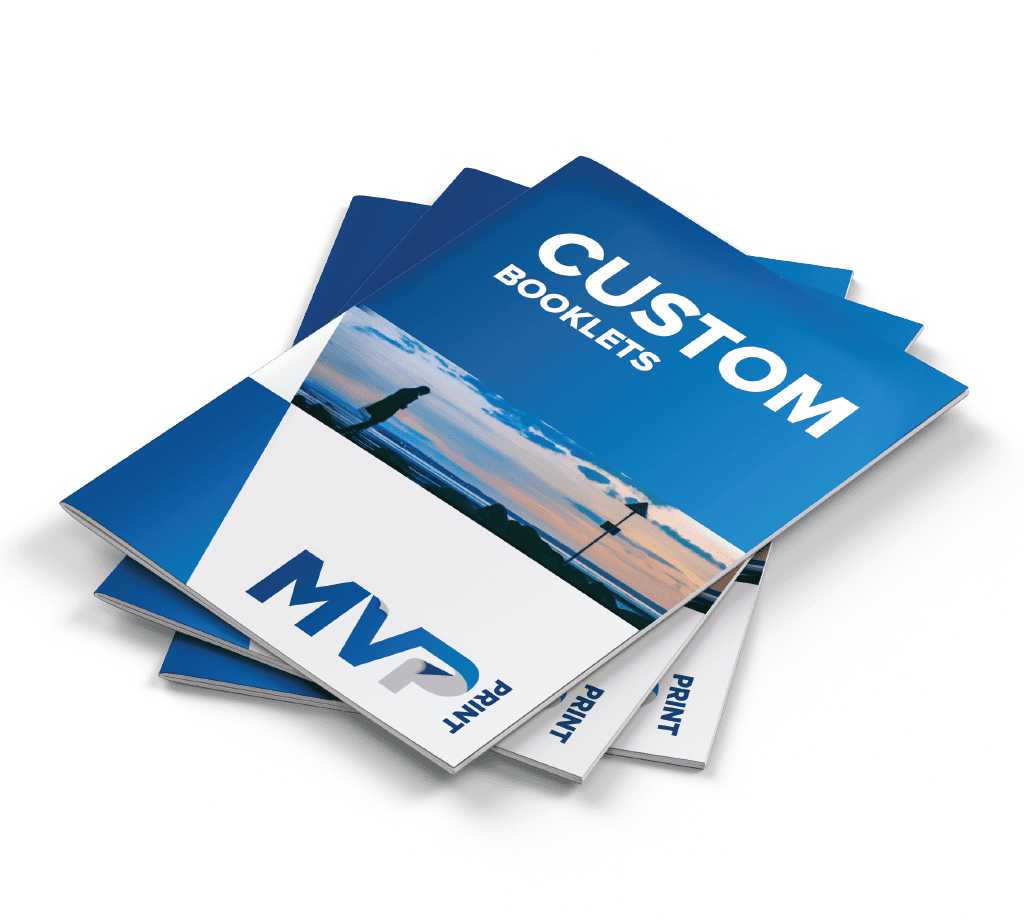
Welcome to the world of eco-friendly reads! As the demand for sustainable book production continues to soar, a new star has emerged in the publishing industry – saddle stitched books. Sustainable stitched book production has captured the hearts of readers and authors alike with their unique attributes and eco-conscious appeal.
But what exactly are saddle stitched books, and why are they gaining popularity? In this article, we will explore the fascinating world of saddle stitch binding, highlighting its advantages, sustainability features, and customization options. We will also introduce you to MVP Print, a company committed to eco-friendly book production and paving the way for the future of sustainable printing.
Key Takeaways:
- Eco-friendly reads are on the rise, fueled by the demand for sustainable book production.
- Saddle stitched books have gained popularity due to their unique attributes and eco-conscious appeal.
- Saddle stitch binding offers advantages such as affordability, versatility, and the ability to lay flat for easy reading.
- These books contribute to sustainability through reduced environmental impact and the use of eco-friendly materials and processes.
- Saddle stitched books are known for their durability, making them a long-lasting choice for readers.
- Magazines, brochures, and other publications often utilize saddle stitch binding for its professional appeal and better reading experience.
- Customization options allow for creative designs and personalization in saddle stitched books.
Understanding Saddle Stitched Booklets
In this section, we will delve into the world of saddle stitched booklets, exploring the technique of saddle stitch binding and highlighting its importance in the printing industry.
What is Stitched Book Binding?
Saddle stitch binding is a popular method used to create booklets and brochures by folding paper pages and stapling them along the spine. This technique involves placing the folded pages inside one another, creating a neat and secure binding.
A Closer Look at the Importance of Saddle Stitching

Saddle stitching offers several advantages that make it a preferred choice for many printing projects. Firstly, it is an affordable option, making it suitable for projects with a limited budget. Additionally, saddle stitched booklets have a versatile design that allows them to lay flat, making it easier for readers to flip through the pages and enjoy the content.
Saddle stitch binding is also known for its durability, ensuring that your booklets can withstand frequent use and handling. This makes it a reliable choice for materials that are intended to be frequently used, such as manuals, catalogs, and brochures.
Furthermore, a saddle stitch booklet is a sustainable option, as it uses minimal materials and produces little waste compared to other binding methods. By choosing saddle stitched booklets, you are making an eco-friendly choice that aligns with sustainable printing practices.
Advantages of Saddle Stitch Binding
Saddle stitch binding offers numerous advantages, making it a popular choice for print projects. In this section, we will explore two key advantages: cost-effective production and rapid turnaround.
Cost-Effective Production
One of the significant advantages of saddle stitch binding is its cost-effectiveness. This binding technique is an ideal solution for projects with limited budgets. Unlike more complex binding methods, saddle stitch binding requires fewer materials and less labor, resulting in lower production costs.
Furthermore, saddle stitch binding allows for efficient use of paper as it involves folding a single sheet and binding it together. This eliminates unnecessary waste and reduces material costs. The affordability of saddle stitch binding makes it a practical choice for various print projects, from brochures and catalogs to magazines and booklets.
Rapid Turnaround for Print Projects
In addition to being cost-effective, saddle stitch binding offers a rapid turnaround time, making it perfect for time-sensitive print projects. The simplicity of the saddle stitch process allows for quick production, ensuring that your printed materials are ready for distribution within tight deadlines.
Compared to other binding methods that require lengthier setups and drying times (eg Perfect Binding), saddle stitch binding offers a streamlined production process. This saves valuable time, allowing you to meet urgent project deadlines without compromising on quality.
Whether you need marketing materials for an upcoming event or promotional brochures that need to be distributed quickly, saddle stitch binding ensures that your print projects are produced efficiently and delivered on time.
Sustainability in Stitched Book Printing

Reducing Environmental Impact with Sustainable Binding
Saddle stitched books offer more than just cost-effective production and rapid turnaround times. They also contribute to reducing the environmental impact of book production, making them a sustainable choice for eco-conscious readers and publishers.
Sustainable binding is a key factor in the eco-friendliness of saddle stitched books. By opting for binding materials and processes that prioritize sustainability, publishers can significantly reduce their carbon footprint. Choosing recycled or responsibly sourced paper for the pages and using vegetable-based inks can greatly minimize the environmental impact of printing. Additionally, ensuring that the binding process is energy-efficient and adheres to eco-friendly practices further promotes sustainable book production.
Materials and Process Choices for Eco-Friendly Book Production
When it comes to saddle stitched books, selecting the right materials and processes is crucial for eco-friendly book production. Sustainable binding materials, such as recycled or FSC-certified paper, can be used to reduce the demand on virgin resources and promote responsible forest management. Considering the recyclability or biodegradability of the binding materials also ensures that the books have a minimal impact on the environment at the end of their lifecycle.
Additive-free printing processes, such as soy or vegetable-based inks, provide an eco-friendly alternative to conventional petroleum-based inks. These inks release fewer volatile organic compounds (VOCs) and reduce air pollution during the printing process. Additionally, using water-based coatings or lamination instead of synthetic varnishes further enhances the sustainability of saddle stitched books.
| Benefits of Sustainable Binding in Saddle Stitched Books |
|---|
| Reduction in carbon footprint |
| Promotion of responsible forest management |
| Minimization of air and water pollution |
| Support for the circular economy through recyclability |
By embracing sustainability in saddle stitched book production, publishers and readers alike can contribute to a greener future. Making eco-friendly choices in binding materials and processes not only reduces environmental impact but also aligns with the values of conscious consumers who prioritize sustainable practices.
Making a Durable Impact with Stitched Book Printing
When it comes to creating books that can withstand the test of time, saddle stitched booklets offer a long-lasting design that ensures durability even with frequent use and handling. The stitching technique used in saddle stitch binding creates sturdy and resilient books that can be enjoyed for years to come.
Saddle stitched booklets are designed to withstand the rigors of daily use, making them ideal for books that need to endure constant flipping, page turning, and transportation. The stitching method ensures that the pages remain securely bound together, preventing them from coming loose or falling out, even with heavy use.
With stitched book binding, you can have peace of mind knowing that your books will maintain their integrity over time. Whether it’s a children’s storybook that will be read countless times or a travel guide that will accompany the reader on multiple adventures, saddle stitched booklets are built to withstand the demands of everyday life.
Why Stitched Book Binding Reigns Supremacy in Magazines and Brochures?

When it comes to magazines, brochures, and other publications, saddle stitch binding has emerged as the preferred choice. This popular binding method offers a multitude of advantages that cater to both functionality and aesthetics.
Lies Flat for a Better Reading Experience
One of the key reasons why saddle stitch binding is favored for magazines and brochures is its ability to lie flat when opened. Unlike other binding methods that curve or hinder the pages from laying flat, saddle stitch allows for easy reading and seamless page-turning. This ensures a more enjoyable and immersive reading experience for users, enabling them to fully engage with the content.
Professional Appeal of Stitched Book Printing
In addition to its functional benefits, saddle stitched booklets also exude a professional appeal that enhances the overall presentation of magazines and brochures. The neat and clean appearance of the stitching adds a touch of sophistication, making the publication look polished and refined. This professional aesthetic is particularly beneficial for commercial and promotional materials, where creating a lasting impression is crucial.
| Advantages of Saddle Stitch Binding in Magazines and Brochures |
|---|
| Lies flat for easy reading |
| Allows for seamless page-turning |
| Enhances the professional appeal of publications |
| Creates a polished and refined look |
| Suitable for commercial and promotional materials |
Customising Your Saddle Stitched Book
When it comes to creating a unique and personalized book, saddle stitch binding offers a range of options to satisfy your creative desires. With diverse saddle stitching techniques, you can chart your creativity and bring your vision to life. Whether you’re designing a brochure, catalog, or magazine, saddle stitch binding allows you to tailor your book to perfection.
Charting the Creativity with Saddle Stitched Book Options
Saddle stitch binding offers a variety of stitching options that can add character and uniqueness to your book. Here are a few popular choices:
- Standard Saddle Stitch: The most common method that uses two staples along the spine to hold the pages together.
- Loop Stitch: A decorative option that creates a loop of stitching on the spine, giving your book a distinctive touch.
- Side Stitch: A contemporary choice where the stitching is done along the sides of the pages, allowing for creative placement of images and text.
By carefully selecting the right saddle stitching option, you can add visual interest and elevate the overall design of your book.
Personalisation and Branding through Binding Choices
Customizing your saddle stitched book goes beyond just choosing stitching options. It also offers an opportunity to showcase your personal touch and reinforce your brand identity. Here are a few ways to achieve personalization and branding:
- Cover Design: Customize the cover with your logo, artwork, or brand colors to make a lasting impression.
- Additional Printing: Add unique elements such as spot UV, foiling, or embossing to enhance the visual appeal of your book.
- Specialty paper: Choose from a range of paper options, like recycled or textured paper, to add a distinctive touch and align with your brand values.
With these binding choices, you can create a saddle stitched book that not only represents your creativity but also reinforces your brand identity.
| Customisation Options | Benefits |
|---|---|
| Cover Design | Creates a professional and memorable first impression |
| Additional Printing | Elevates the visual appeal of the book and adds a touch of luxury |
| Specialty Paper | Enhances the tactile experience and aligns with your brand values |
These customisation options allow you to create a saddle stitched book that truly stands out from the crowd and showcases your unique style.
Enhancements in Stitched Book Aesthetics and Finishes
This section highlights the various enhancements and finishes that can be applied to saddle stitched books to enhance their aesthetics. By utilizing these techniques, book designers and publishers can add value and visual appeal to the finished books, making them more attractive to readers.
One popular enhancement option is embossing, which creates raised patterns or designs on the book cover. Embossing adds texture and depth to the book, giving it a more tactile and luxurious feel. Another technique is debossing, which creates recessed designs or patterns on the cover, providing a subtle and elegant look. Talk to us about how to set up your cover Artwork for these finishing options.
For a touch of elegance and sophistication, foils can be used. Foil stamping involves applying a metallic or colored foil onto the cover, creating a reflective or decorative effect. This technique allows for the incorporation of metallic finishes or vibrant colors, making the books visually striking.
Lamination is another popular choice for enhancing book aesthetics. It involves covering the hard cover and/or pages with a thin layer of plastic film, which provides protection and gives the book a glossy or matte finish. Lamination not only improves the appearance of the book but also increases its durability, making it more resistant to wear and tear.
By incorporating these enhancements and finishes, saddle stitched books can be transformed into visually captivating and appealing products. These techniques not only enhance the aesthetics of the books but also add value and provide a unique reading experience for the audience.
MVP Print’s Commitment to Eco-friendly Stitched Book Production

Australia’s own MVP Print is setting a new standard in eco-friendly book production. With a dedication to sustainability and a focus on minimizing the environmental impact, MVP Print is leading by example in the printing industry. Through careful material sourcing and waste management practices, MVP Print ensures that every step of the printing process aligns with eco-conscious principles.
Maintaining Sustainability Throughout the Printing Process
MVP Print takes a holistic approach to sustainability, considering every aspect of the printing process. From the selection of materials to the use of energy-efficient equipment, every decision is made with the environment in mind. By using sustainable practices such as recycling waste and reducing water consumption, MVP Print minimizes its carbon footprint and contributes to a healthier planet.
Elevating the Quality with Environment-Conscious Materials
Not only is MVP Print committed to sustainability, but they also prioritize the quality of their printed books. By using environment-conscious materials, including recycled papers and vegetable-based inks, MVP Print ensures that each book is not only eco-friendly but also visually stunning. These materials not only meet the highest standards of quality but also reduce the use of virgin resources and provide an eco-friendly alternative for book production.
Case Studies: Success Stories with Saddle Stitched Books
In this section, we will examine case studies of successful projects that have utilized saddle stitched books in an eco-friendly and sustainable manner. These case studies showcase the high-quality projects and highlight the latest trends in eco-friendly publishing.
Examining High-Quality, Sustainable Projects
Case Study 1: Green Horizons Magazine
Green Horizons Magazine, a leading publication in the sustainability industry, decided to produce their magazine using saddle stitch binding to align with their eco-friendly values. By using recycled paper for the pages and vegetable-based inks for printing, they were able to create a high-quality magazine while minimizing their environmental impact. The saddle stitch binding allowed the magazine to lay flat, providing a better reading experience for their audience.
Case Study 2: EcoKids Coloring Book
EcoKids, an educational organization focused on environmental awareness among children, wanted to create a fun and engaging coloring book to promote sustainable practices. They chose saddle stitch binding for the book, using FSC-certified paper and soy-based inks. The book not only educated children about eco-friendly habits but also embodied those values through its sustainable production process.
The Latest Trends in Eco-Friendly Publishing
As the publishing industry continues to prioritize sustainability, saddle stitch binding has emerged as a popular choice for eco-friendly publishing. Here are some of the latest trends:
- Minimalist Designs: Many publishers are adopting minimalist designs, using clean layouts and simple graphics to reduce paper waste and convey their message effectively.
- Integration of Digital Content: Publishers are increasingly combining digital and print formats to reduce paper consumption. Saddle stitched books are well-suited for including QR codes or augmented reality features that link to additional digital content.
- Collaboration with Eco-Conscious Brands: Publishers are partnering with eco-conscious brands to create collaborative saddle stitched books that promote sustainable lifestyles and highlight the efforts of these brands.
By staying abreast of these trends, publishers can produce eco-friendly saddle stitched books that resonate with their audience and contribute to a more sustainable publishing industry.
| Case Study | Publication | Eco-Friendly Practices |
|---|---|---|
| Green Horizons Magazine | Leading sustainability publication | Use of recycled paper and vegetable-based inks |
| EcoKids Coloring Book | Educational organization for children | FSC-certified paper and soy-based inks |
Navigating the Technical Specifications of Saddle Stitched Booklets
In order to successfully plan and produce saddle stitched booklets, it is important to understand the technical specifications involved. By considering factors such as page counts, size configurations, material options, and recycling potential, you can make informed choices that align with your project goals and sustainability values.
Understanding Page Counts and Size Configurations
When determining the page count for your saddle stitched booklet, it is essential to consider the desired content and layout. Smaller page counts are ideal for thinner publications, while larger page counts accommodate more extensive content. It is important to note that saddle stitched booklets typically work best with page counts that are divisible by four, as each folded signature consists of four page increments. This ensures seamless binding and a polished finished product. BE concious that the minimum page count for a Self Cover Saddle Stitch Booklet is 8pp (printed pages)
Commonly clinrts are unaware that the page count needs to be in multiples of 4 pages. As such, oftern we advise to add in blank pages to the book, more often than not in the front and back inside covers. Essentionally, the wire staples needs 1 `section’ in every 4 pages (for example, and A4 Saddle Stitched Book is made up of A3 `sections’, with each section comprising of 4 x A4 templates). These sections are the stapled (Saddle Stitched) to make the complete book, from the first page to the last page, as long as they are in a page count of 8 pages..
Size configurations also play a crucial role in the planning of saddle stitched booklets. You can choose from a variety of standard sizes, such as A4, A5, or custom dimensions based on your specific needs. It is important to consider factors such as readability, portability, and the overall aesthetic appeal when determining the size of your booklet.
Material Options and Recycling Potential
The choice of materials for your saddle stitched booklet can greatly impact its durability, appearance, and environmental sustainability. Consider using responsibly sourced paper that is FSC-certified or made from recycled content. Additionally, explore options for eco-friendly inks and coatings that minimize environmental impact.
By selecting materials that are easily recyclable and promoting proper recycling practices, you can further enhance the environment-friendly aspect of your saddle stitched booklets. Remind readers of the recyclability of the materials used and provide clear instructions on how they can dispose of the booklets responsibly.
It is important to note that the recycling potential of saddle stitched booklets depends on the materials used and the recycling infrastructure in your region. By choosing materials with high recycling potential and advocating for sustainable practices, you contribute to a more circular economy and environmental conservation.
Conclusion
In conclusion, saddle stitched books play a vital role in today’s publishing industry, providing a sustainable and eco-friendly option for book production. Throughout this article, we have explored the benefits of saddle stitch binding, including its affordability, versatility, and ability to lay flat for easy reading.
By choosing saddle stitching, publishers can reduce their environmental impact and contribute to the preservation of our planet. Sustainable binding materials and processes are crucial in the production of eco-friendly books, and MVP Print is leading the way in this regard.
MVP Print’s vision for the future of sustainable printing is clear: to continue providing high-quality saddle stitched books while maintaining a commitment to environmentally conscious practices. With their dedication to sourcing sustainable materials and implementing eco-friendly printing processes, MVP Print is setting a standard for the industry.
FAQ
What is saddle stitch binding?
Saddle stitch binding is a technique of folding paper pages and stapling them along the spine to create booklets.
Why is saddle stitch binding important?
Saddle stitch binding is important because it offers affordability, versatility, and the ability for booklets to lay flat for easy reading.
What are the advantages of saddle stitch binding?
Saddle stitch binding offers cost-effective production options and rapid turnaround times, making it suitable for projects with limited budgets and time constraints.
How does saddle stitch binding reduce environmental impact?
Saddle stitch binding helps reduce environmental impact by utilizing sustainable binding materials and processes in book production.
Are saddle stitched booklets durable?
Yes, saddle stitched booklets are durable as the stitching technique ensures a long-lasting design that can withstand frequent use and handling.
Why is saddle stitch binding preferred for magazines and brochures?
Saddle stitch binding is preferred for magazines, exhibition catalogues and brochures because it allows the booklets to lie flat when opened, providing a better reading experience. Additionally, it offers a professional appeal for commercial and promotional materials.
Can a stitched book be customized?
Yes, saddle stitched books can be customized with diverse saddle stitching options, allowing for creative designs and unique finishes. They can also be used for personalization and branding purposes.
What enhancements and finishes can be applied to saddle stitched books?
Saddle stitched books can be enhanced with options such as embossing, debossing, foils, and laminates, adding value and visual appeal to the finished books.
How does MVP Print ensure eco-friendly book production?
MVP Print maintains sustainability throughout the printing process by sourcing environment-conscious materials and implementing proper waste management practices.
Are there any successful case studies of saddle stitched books being used in eco-friendly projects?
Yes, there are successful case studies showcasing how saddle stitch binding has been utilized in high-quality, sustainable projects and the latest trends in eco-friendly publishing.
What are the technical specifications to consider for saddle stitched booklets?
When planning a saddle stitched book project, it is important to consider factors such as page counts, size configurations, material options, and the recycling potential of the books.








